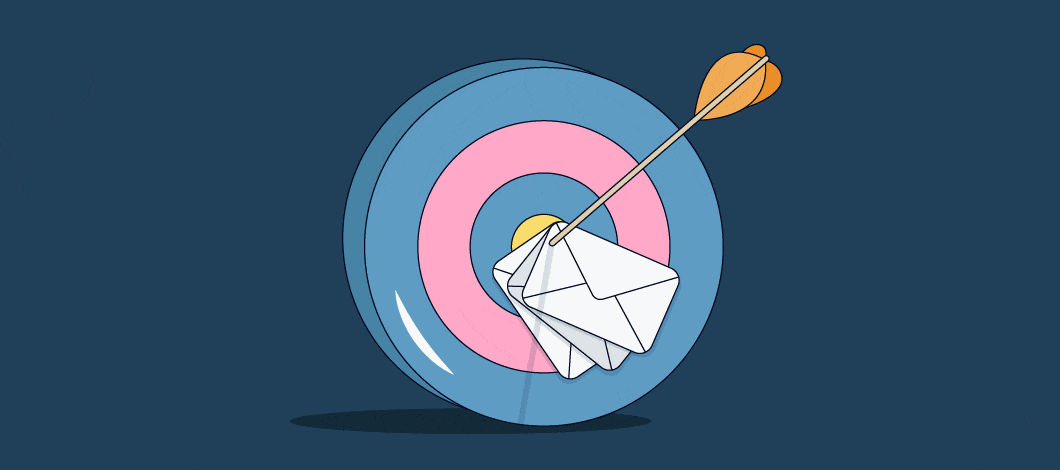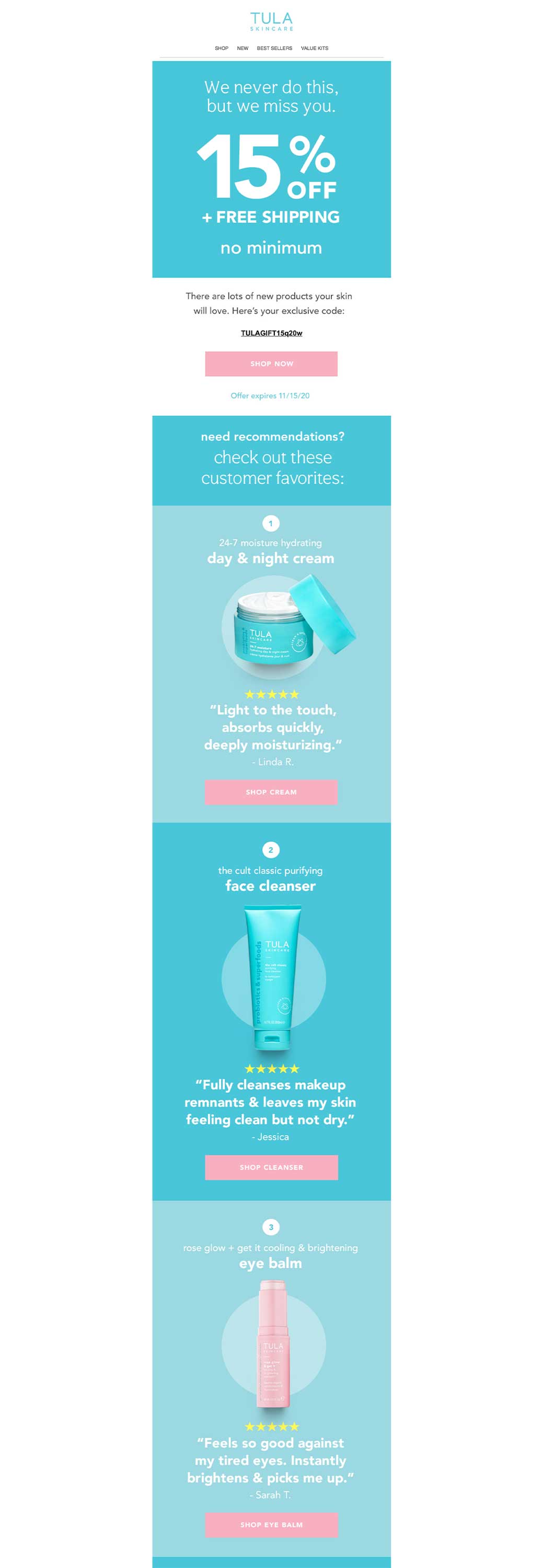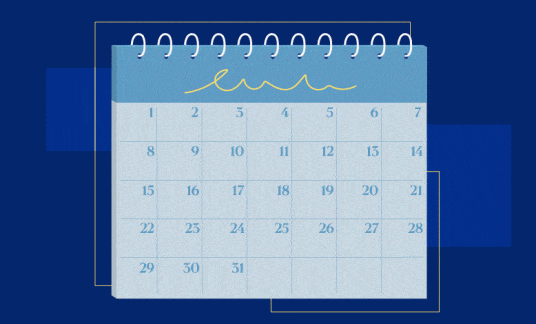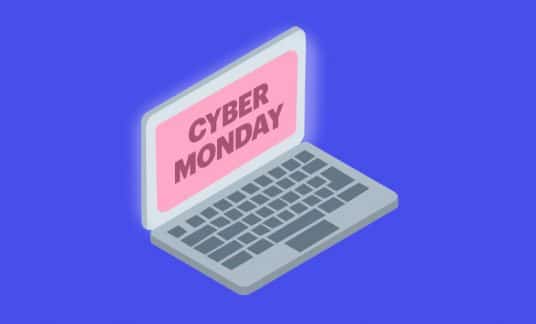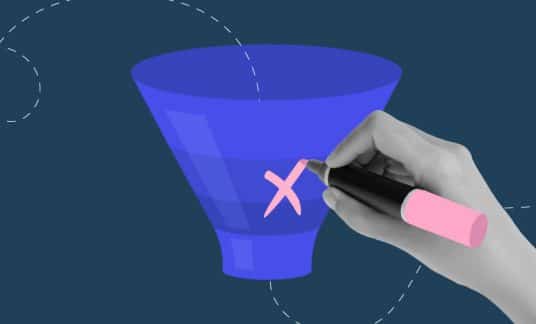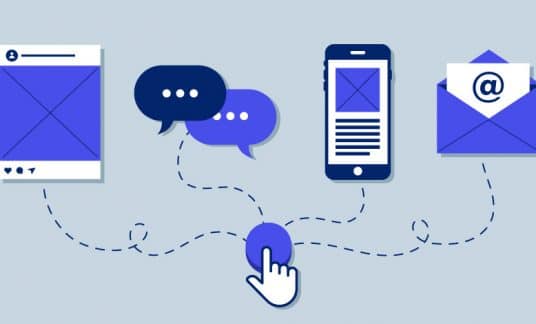Email retargeting is the most effective way to drive conversions and win back lost customers in 2021.
How many people are coming to your website, looking at 1 or 2 product pages, maybe adding 1 item to their cart, then abandoning it and leaving forever? The answer: 69% of carts are abandoned, according to email marketing software company Moosend.
Once you set up email retargeting, you’ll be converting those customers instead of losing them to the abandoned abyss. Automatically, 24/7/365.
How does this magic work? We’ll explain.
What is Email Retargeting?
Retargeting is often thought of as display ads. Know when you visit a website and for days and weeks later and you see ads for that company on other websites? That’s display ad retargeting.
A tracking code knew you went to Bob’sFancyLighting.com and because it’s always easier to sell to a warm lead than a cold one, Bob’sFancyLighting.com shows you ads around the web hoping you’ll remember them and come back.
Email retargeting works the same way.
What if you could land into a customer’s inbox with a custom-tailored email that says, “Hey! We saw you checked this product out. Still want to buy it?”
The logic behind setting up a system like this is quite simple, as illustrated by Moosend.
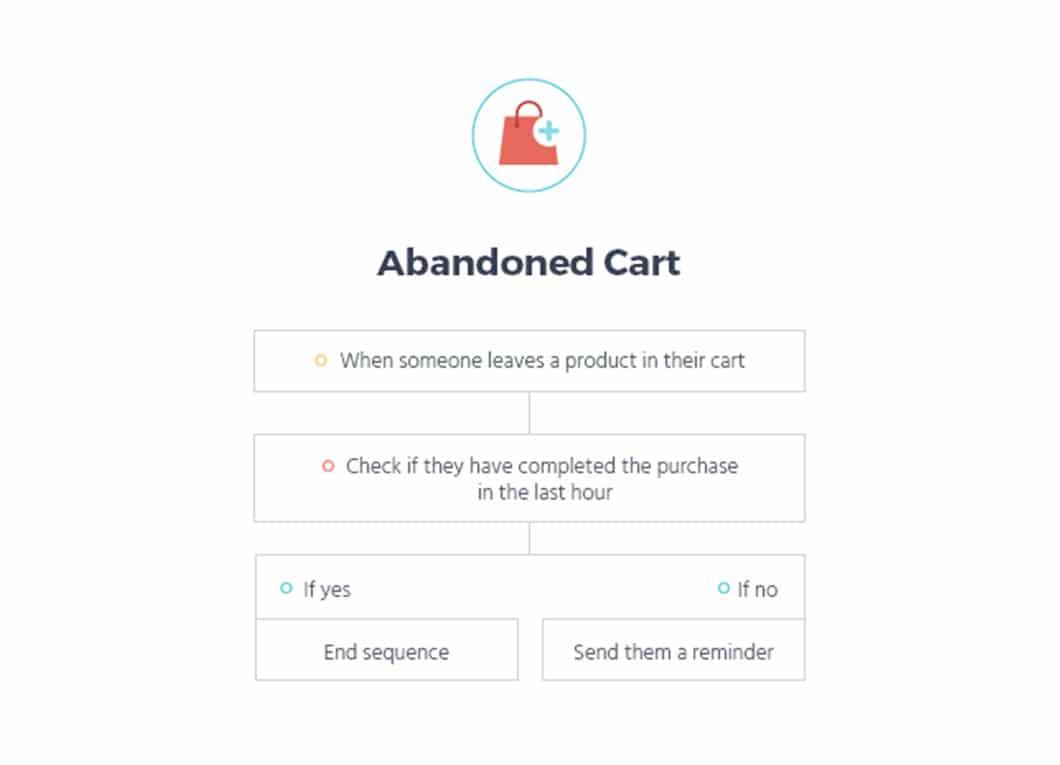
This simple setup can result in a 4%-5% purchase recovery rate, according to research by Klaviyo. That’s based on companies with an average order size of $100-$500. Some companies have seen much higher returns, such as Peak Design which recovers an average 12% of their abandoned carts.
Klaviyo found cart abandonment emails with a subject line implying the user left something behind had a high average open rate of 47%.
According to Moosend, high shipping fees are the reason for cart abandonment in 60% of cases.
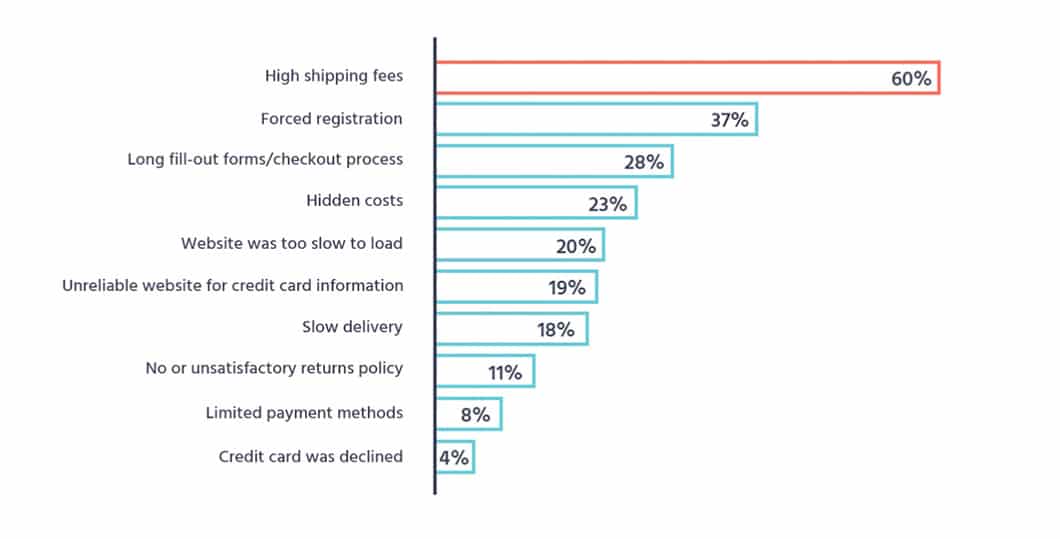
But email retargeting is much more powerful than addressing cart-abandonment issues.
5 Successful Email Retargeting Campaign Examples
1. Emails Focusing on a Specific Product
This is an automated email that highlights a specific product a user looked at but didn’t buy. This could be part of a cart abandonment series or could even apply if the user didn’t add it to their cart.
An effective strategy is to add a new piece of information about an item the customer was previously interested in. For example, fashion brand Uniqlo sends out notifications when the price drops on an item a user checked out before or added to their wish list.
This works well because if the person was interested in this shirt at $20, they will be even more interested at $15.

2. Cart Abandonment
As mentioned above, cart-abandonment emails are one of the most common types of email retargeting campaigns. They also are one of the most effective.
Some companies send out a general “complete your checkout” type of email, such as clothing company Chubbies.
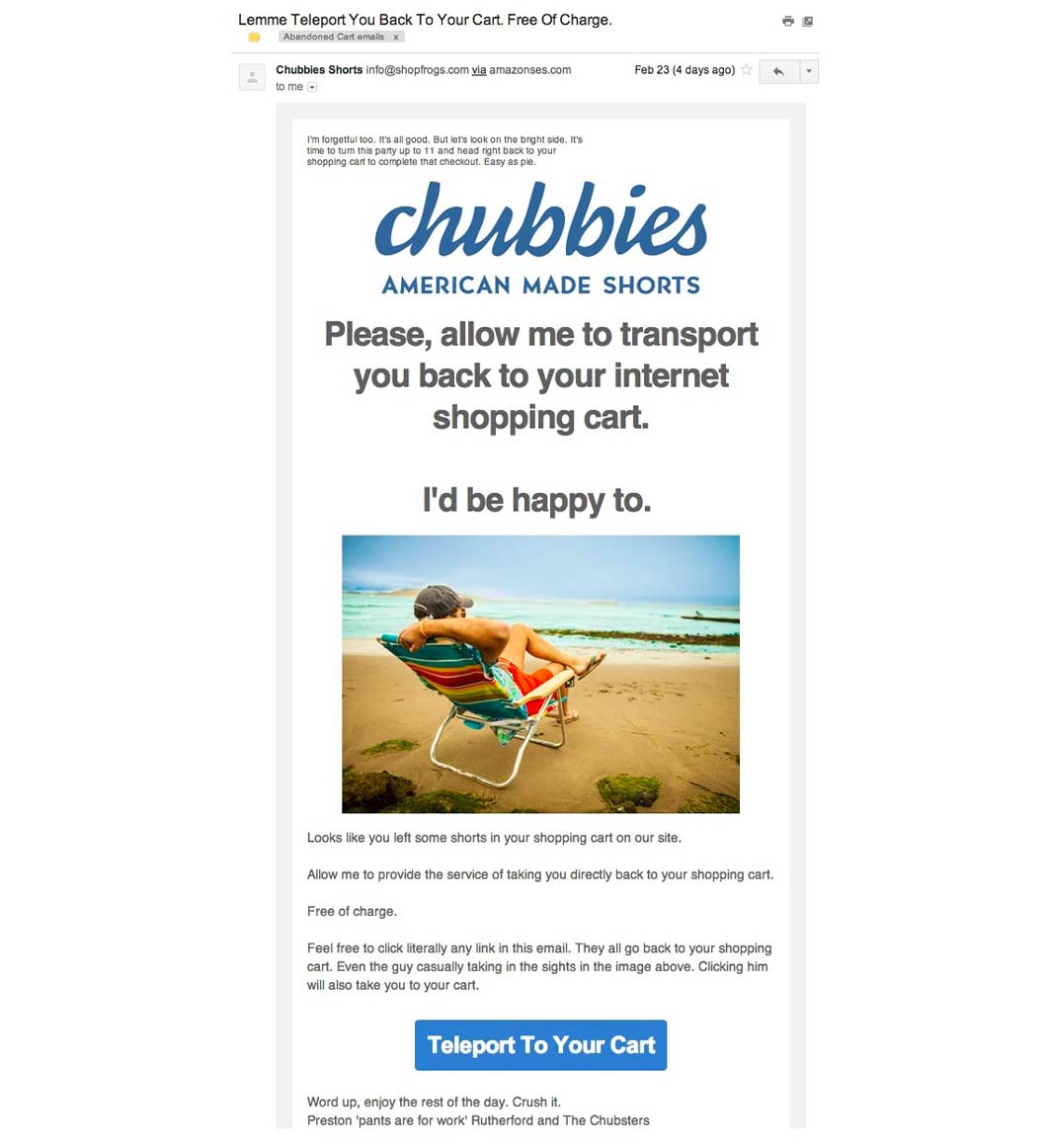
Other companies work in personalization tactics. In the email retargeting example below, Sephora included a few of the products in the user’s cart within the email. This makes it feel more personal to the customer.
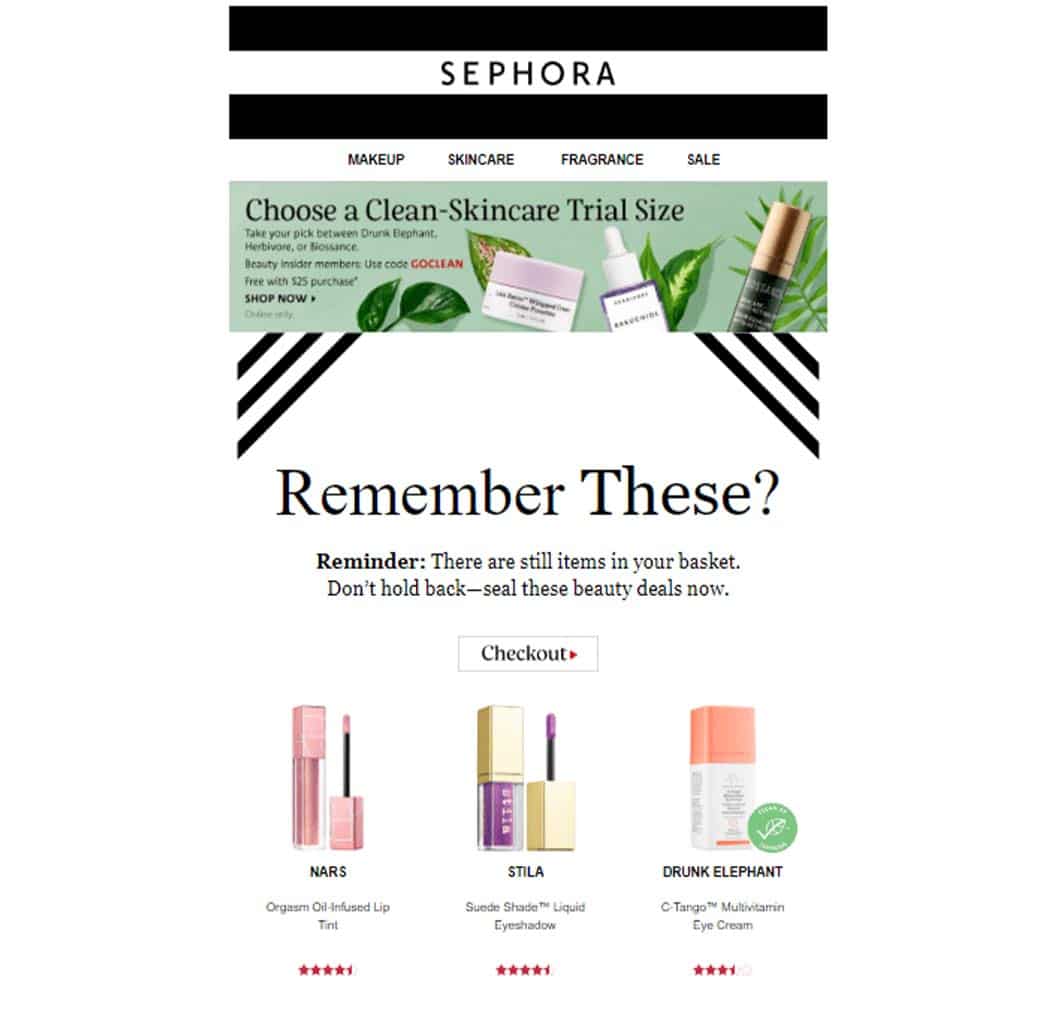
3. Back-in-Stock Notification
This is a powerful email for driving conversions because:
- The customer is signing up for it intentionally
- You also get to add them to your general marketing lists
Depending on your ecommerce platform, there is probably an app out there to allow this functionality. For example, Shopify has many, including Back in Stock, which is pictured below:
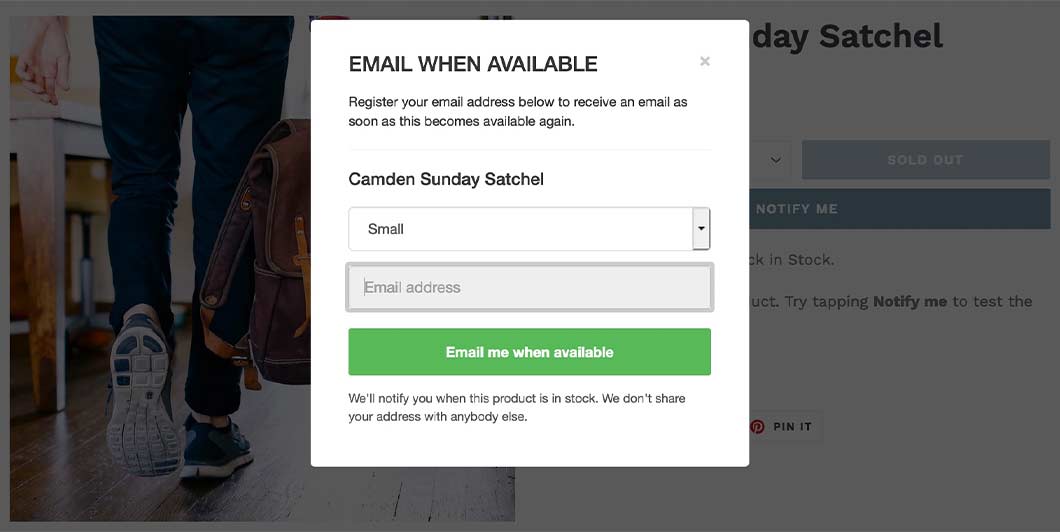
This not only tells you valuable marketing data, such as what products your customers really want and if you should bring in more of certain colors, sizes, etc. But it’s a way for a customer to invite you into their inbox.
Using an app exactly like this helped BirkenstockCentral.com get an average 22.45% conversion rate from these back-in-stock emails.
4. Upsells on Recent Purchases
According to data from the Luxury Institute, repeat customers are 60%-70% more likely to make a subsequent purchase. You can capture these upsells automatically with email retargeting.
Create a segment in your email software for recent customers. For example, those who made a purchase within the last 7 days.
Send this segment an email following up on their last purchase. You can personalize each one to suggest items related to what they already bought, or you can send a special offer to the entire segment, such as a 10% off coupon for another order in the next 30 days.
Old Navy is famous for this tactic. During special promotions, the clothing chain offers shoppers “Super Cash.” Shoppers earn a percentage of their purchase back as a gift card.
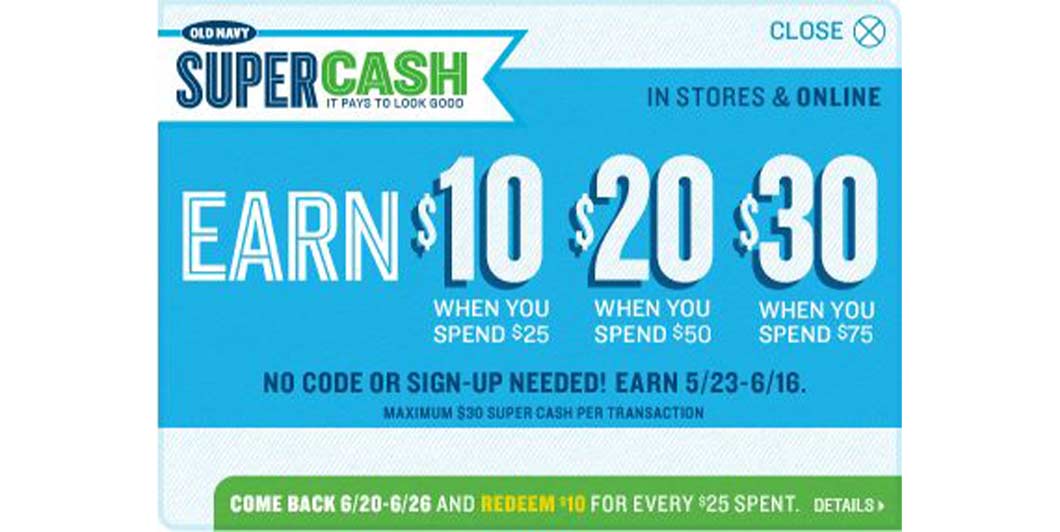
Super Cash must be used during a specific timeframe in the future. That’s easy for customers to forget so right before that week starts, Old Navy sends users who earned Super Cash an email to remind them to order during the upcoming week.
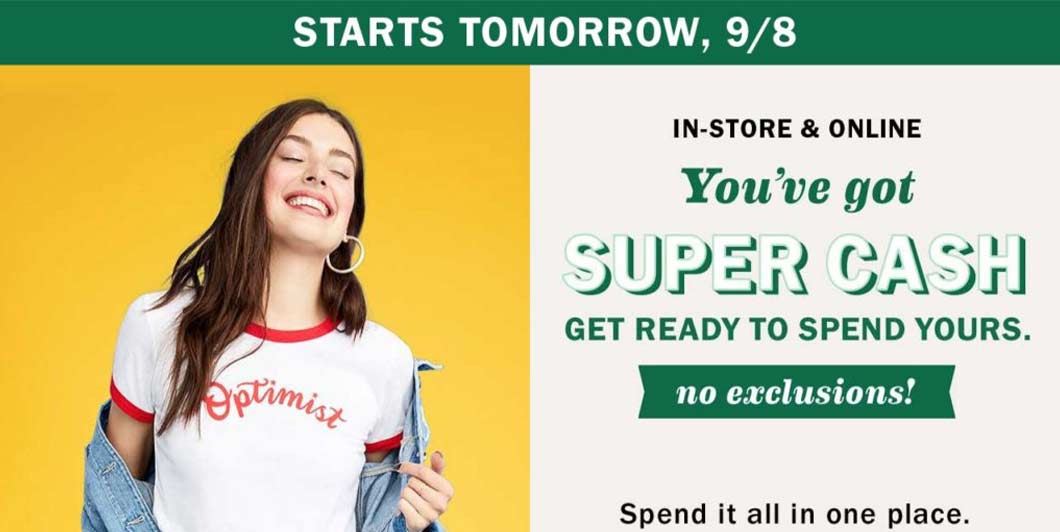
Old Navy sends a few reminder emails if the user hasn’t used their Super Cash yet during the week. This is a highly effective way to re-engage your recent customers by offering them a deal too good to pass up.
5. Win-Back Campaigns
The strategy above also can work with customers who haven’t purchased from you in a long time, or maybe placed a one-off order years ago: Your lost customers.
You can do the same thing here. Create a segment of customers who you consider lost. That could be people who haven’t purchased in 6 months, a year, 2 years, etc. Whatever the time frame, set it and create an automated campaign to be sent to only these people.
These types of emails often have a theme of “We Miss You” and offer customers an enticing offer to come back and shop. That could be free shipping, a 20%-30% off coupon, a free gift or whatever else you want it to be. But you need to offer something to woo them back.
Skincare brand Tula offers a 15% discount as part of its win-back campaign, but takes the email a step further by also offering product recommendations. This makes it easy for someone to be intrigued by their products again and click through.
4 Best Practices to Follow for Email Retargeting
1. Use Segmentation
Split your customers into groups within your email software to ensure your email retargeting campaigns are reaching the right people at the right time.
For example, you wouldn’t want to send an abandoned cart email to a customer who placed an order 8 hours before, right? Not only is that not going to result in a conversion, but it may annoy your customer because it’s irrelevant.
Platforms such as Shopify can manage these segmentations easily since it’s also your ecommerce hub. However, all modern email software has segmentation capabilities nowadays, so figure out how it works on yours and ensure this part is working properly before launching an email retargeting campaign.
2. Use Personalization
If you have data, use it. If you know your customer’s first name, add it to the email. It’s a small detail that makes everything feel more customized and personal.
If you know their location, send location-specific offers. That could be a special holiday promotion for a holiday in their country or a free shipping coupon for their destination.
If you know the customer’s birthday, send an automated birthday card discount. These are all things that help build relationships and make customers feel like more than just a number to you.
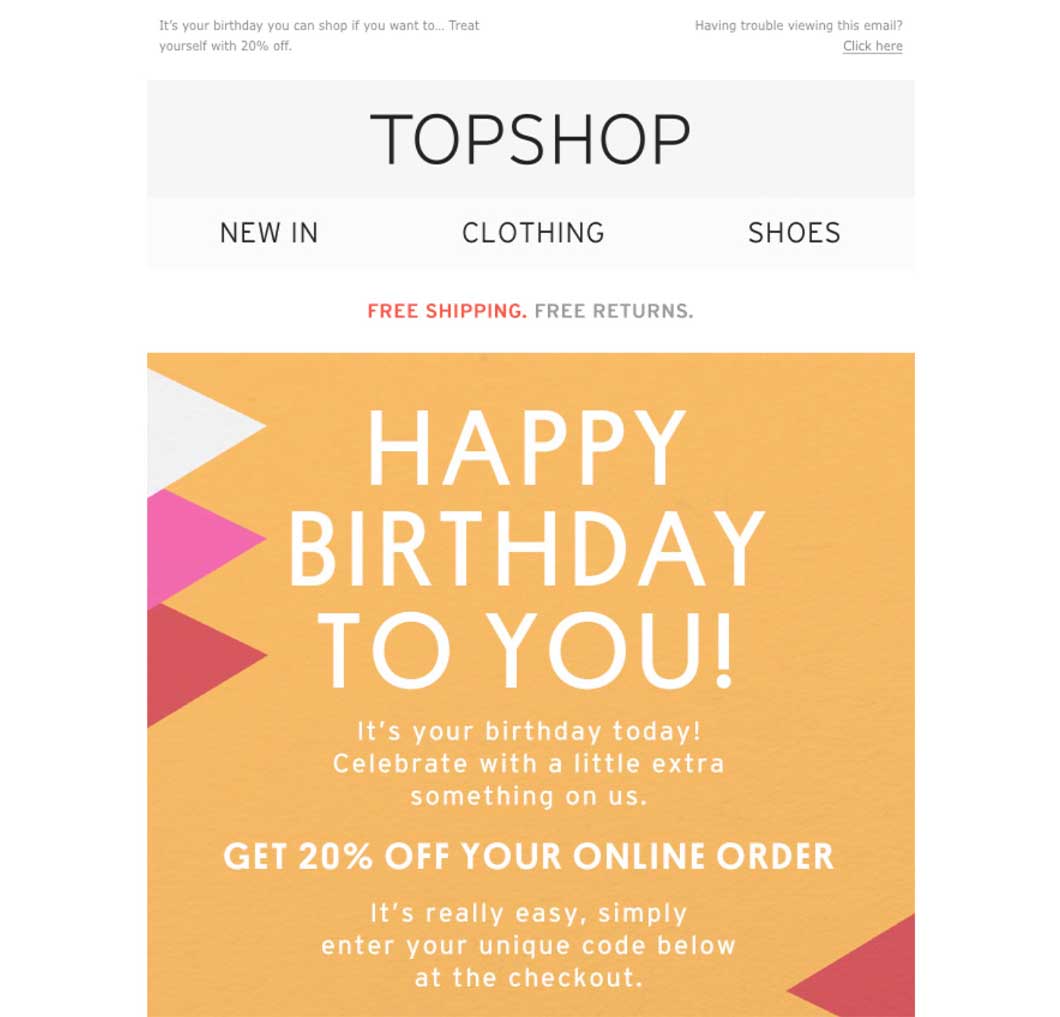
3. A/B Test Copy in Your Email Retargeting
It goes without saying that you should be A/B testing your email subject lines, copy, design and images, right? Consider this reminder to not write an automated email once and forget it.
Constantly tweak, test and revise your retargeting email campaigns to figure out what drives the most conversions with your audience.
4. Try Different Offers
Another thing to test is your offer. Whether it’s an abandoned cart email, win-back campaign or birthday discount, experiment with different offers.
If you’re offering 10% off for win-back campaigns, test out offering 15% or 20%. Or change it up completely and offer a free gift. It could be worth it if it sharply increases your conversion rate.
Convert More Customers Automatically with Email Retargeting
Email retargeting is an automated way to build customer relationships, win back lost customers and recover those all-too-common abandoned carts.
With a few hours a week of setup, copy tweaking and A/B testing, you can have a well-oiled machine pumping out a 4%-22% average conversion rate, depending on the type of email retargeting campaign.
Remember to personalize your emails when you can, try out different offers and ensure your customers are being properly segmented for maximum effectiveness.
Get started today and get a nearly instant return on investment starting tomorrow with email retargeting.



